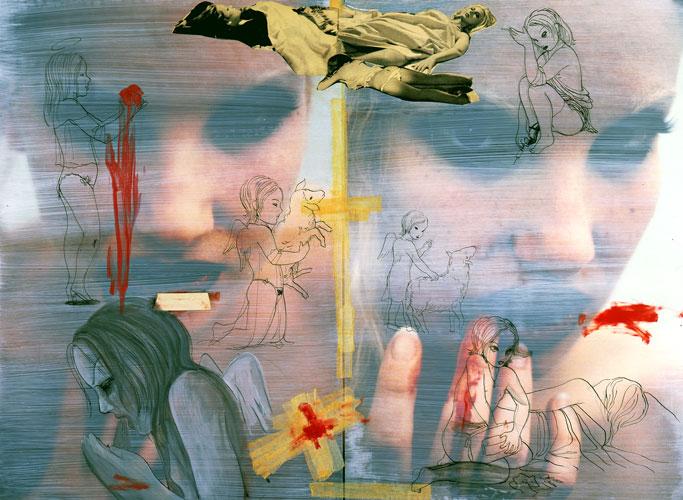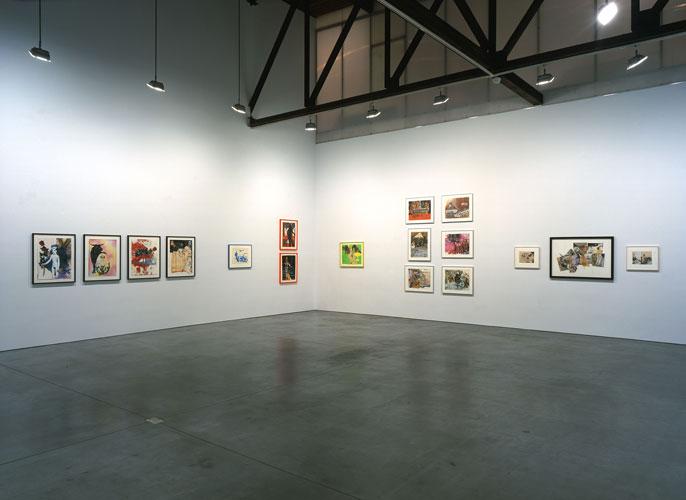Rita Ackermann
Collages 1993-2005
September 9 – October 15, 2005
Main Gallery
We open our new season with an artist who has shown with the gallery for over a decade, yet appropriately embodies a new agenda and direction we observe in the art world of this moment; and with a retrospective of work spanning thirteen years which has somehow always appeared ahead of its time. The exhibition is a survey of Rita Ackermann's collages dating back to her earliest art-making in New York, and drawn from all the disparate phases of her practice.
Ackermann's eye and mind are always open to historical information, to the minutiae of popular culture, and to the work of other artists, writers, dancers or musicians which she eagerly absorbs. The medium of collage is ideal to reflect this eclectic interest and knowledge. But the artist plays a vital role in processing and sublimating that material, whether its origins are recognizable or not, to become something less easily explained and verbalized. The result is a work that can be experienced viscerally and physically, and frustrates our inclinations to intellectualize our reading or to distill the content. It is in this quality that Ackermann's ‘historical' work in this exhibition seems to prefigure in interesting ways the new art-making that is potentially emerging. Indeed, a reason to mount this exhibition is that Ackermann's work appears to be the precursor to the most interesting work being made now, which is informed and comes from a background of knowledge, but in which the process is intuitive and spontaneous rather than intellectually driven.
Though the works created are entirely new entities, it is possible to identify many of the component parts from which they have been forged, and a fascinating range of sources is revealed. Newspaper cuttings and magazine pages and scraps of art books join sheets cannibalized from Ackermann's note books, and are meshed together with daubs of paint, skeins of ballpoint pen or blizzards of torn paper. Ackermann's own image appears in some of the earliest pieces, and her nubile alter-egos, cut from invitation cards to her own exhibitions and familiar from her early paintings, also make an appearance. Antonin Artaud, a constant inspiration and fascination, is present, and Alfred Jarry's "Ubu Roi" (the subversive landmark of absurdist theater) inspires an entire series. Leigh Bowery casts a shadow in neon silhouette across the most recent work. Other elements are personal, reflecting for example her Eastern European heritage, and chart autobiographical details of her life, as in the Western and religious iconography that enters the work during a period spent living in Texas.
Always apparent is Ackermann's willingness, even drive, towards the difficult and the extreme, that quality of pushing to the edge which perhaps made some of these works hard to digest at the time of their making, and makes them seem so fresh today.



